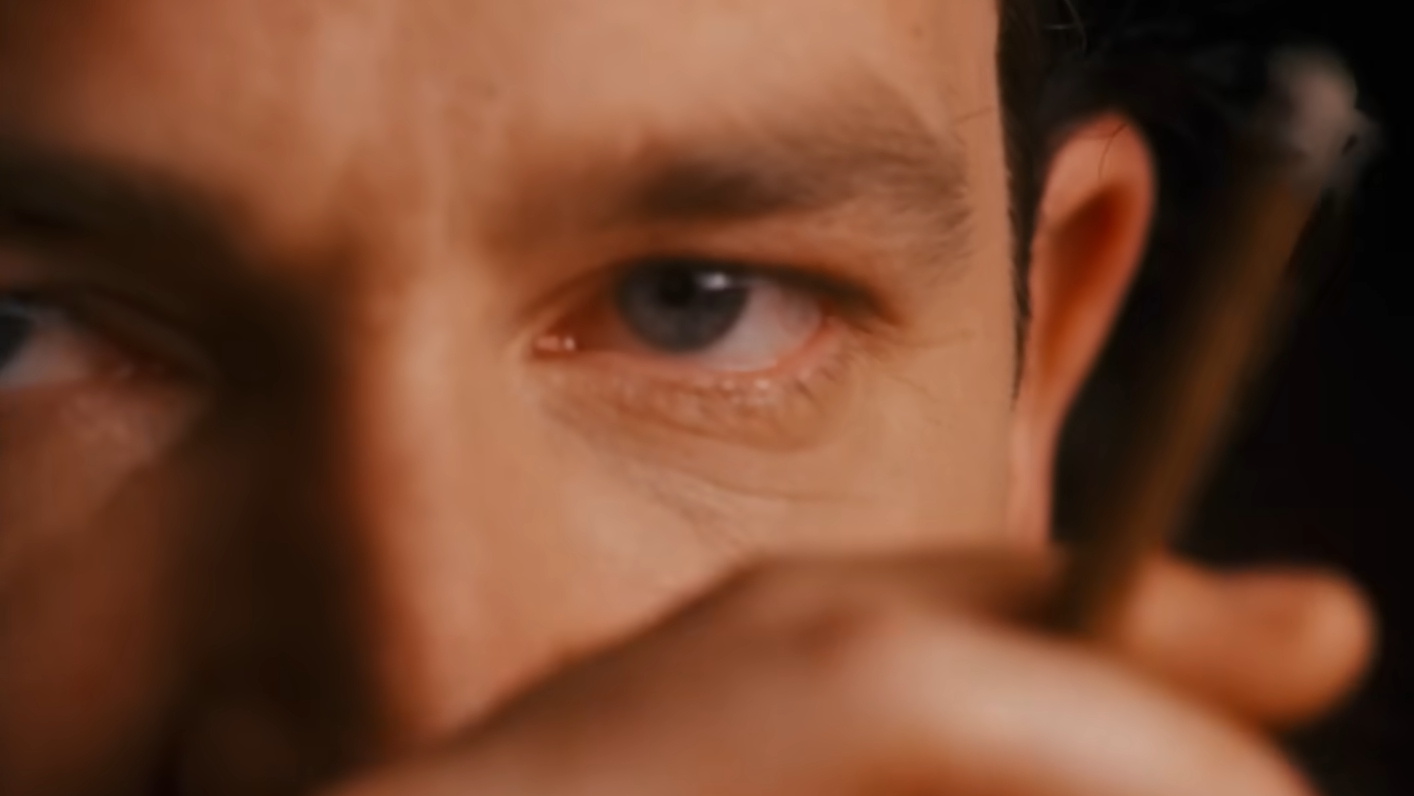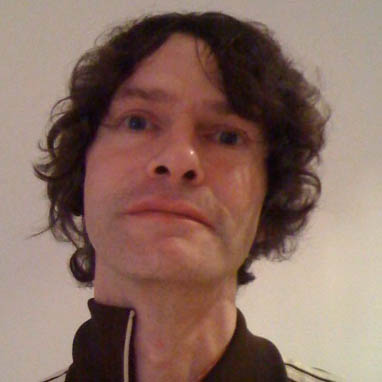“I’m still disappointed when people hear the chorus line as ‘got to’ rather than ‘get to’“: How One rescued Achtung Baby and saved U2
Track was written in just 15 minutes

The times they were a-changin’. When U2 wrapped up the decade with a series of homecoming gigs at the Point Depot in Dublin in December 1989, they had already smelt the coffee.
Seven weeks previously, the Berlin Wall had come down. Revolution had spread to Czechoslovakia and then Romania. And the new decade was already acquiring a new soundtrack – dance and hip-hop were the rising forces and the rock bands who assimilated these best looked likely to be the ones to prosper in the 1990s. So where did that leave U2, with their hoary old blues rock, their waistcoats and mullets? Needing to, in Bono’s words at the final Point show: “dream it all up again”.
Central to that was Berlin, the city which, it quickly became clear, would become the centre of a reunited Germany and a new Europe. When U2 arrived in Hansa Studios ten months later to start recording what would become Achtung Baby, one half of the band had a vague plan. Whilst the whole group were keen that the new record should junk the Americana of the Joshua Tree/ Rattle And Hum era, it was unclear what should be put in its place.
Bono and The Edge were keen to incorporate dance rhythms and industrial textures into U2’s music. The rhythm section – Adam Clayton and Larry Mullen Jr - weren’t so keen. In the 2011 documentary From The Sky Down, the drummer summed up the group’s problems: “Even before we got there, there was a sense that something was not quite right. And when we got there we were on completely different pages.”
“We would go into the room and just bash it out hour after hour, listen back and not like anything that we were doing,” said Clayton. “We were going down a lot of blind allies. There was a lot of friction, a lot of tension. Nobody was particularly happy.”
The band were struggling. Slogging through an early version of Mysterious Ways – then entitled ‘Sick Puppy’ – the group were trying a number of different chord progressions for the bridge when The Edge stumbled upon one that lit up everyone’s eyes.
“I played these on an acoustic guitar and everyone was trying to decide whether they were any good,” the guitarist remembered in the documentary. “And then Danny (Daniel Lanois) said ‘why don’t you play those two ideas sequentially, just one after another’. So I did and everyone was like ‘ooh that sounds really good.’
Want all the hottest music and gear news, reviews, deals, features and more, direct to your inbox? Sign up here.
“So we all went into the big room. I shouted out the chords and we just started playing them. Bono got on the microphone and suddenly something very powerful is happening in the room. It was one of those hairs on the back of your neck moments.”
Bono improvised some lyrics and called out some chords, working out the song bit by bit. In just 15 minutes, a new song had somehow miraculously sprouted. “It was such a pivotal moment,” says The Edge. “We’d been going through this hard time and nothing seemed to be going right. Suddenly we were presented with this gift, it just kind of arrived. It steadied everyone’s nerves hugely in the studio.”
For his lyric, Bono decided to write about what was happening around him and the divisions in the band. One of the many ironies about One is that it took a song about breaking up to bring the group back together.
“There was melancholy about it but there was also strength,” Bono said in the 2006 book U2 By U2. “One is not about oneness, it's about difference. It's not the old hippie idea of 'let's all live together.' It is a much more punk rock concept. It's anti-romantic: 'we are one but not the same. We get to carry each other.'
"It's a reminder that we have no choice. I'm still disappointed when people hear the chorus line as 'got to' rather than 'we get to carry each other.' Like it or not, the only way out of here is if I give you a leg up the wall and you pull me after you.”
It was the first glimmer that the new album, and indeed the band itself – things had got that bad – was salvageable. The Hansa sessions were wrapped up by Christmas 1990, with One the only gleaming fruit of their stint in Berlin. “(Now) we just had put the work in and figure out the ideas and hone those ideas down,” said Clayton.
In the New Year, the band moved to a seaside home, Elsinore in Dalkey, south of Dublin, where they set up a studio and the bulk of Achtung Baby was put together. One was worked on some more with overdubs and strings added. Feeling that the track was ‘too beautiful’, the Edge added some ‘gritty’ guitar.
Then Daniel Lanois added a little something. Speaking to Rolling Stone in 2016, he remembered: “It was just me and Bono in the studio and he said, ‘Dan why don't you play a little guitar part to try and juice me up,’ and so I overdubbed a part that made the finish line, this little hammer-on kind of part on his Green Gretsch and that provided Bono with some encouragement.”
Even after that, One was still subject to some last-minute adjustments. In September 1991 at the final mixing session at Dublin’s Windmill Lane studios, Bono re-recorded one line and The Edge added a guitar part, before it was put to bed, to the satisfaction of all parties.
Achtung Baby was released two months later. Reviews of the album were generally positive and much was made of how the album sounded different to the ‘old U2’, particularly the use of electronic textures and dance rhythms on some of the tracks. One itself flew under the radar a little.
Few reviewers picked it out as the outstanding track on the album, an exception being Niall Stokes, the editor of Ireland’s Hot Press, who described it as “a magnificent synthesis of elements, words and music, rhythm, instrumentation, arrangement and intonation combine to create something that speaks a language beyond logic, the definitive language of emotional truth"
It was released as the third single in February the following year with all proceeds (including U2’s royalties) going to AIDS charities in each country it was released in. Despite this, it only performed modestly, reaching the Top Ten in both the US and UK. It could be that fans already had the album and passed on the single; it was in the middle of a recession, after all.
After that came Zoo TV. One was played every night of the tour – ironically the one new song that seemed to strike at a profound emotional truth was an irreplaceable prop of a charabanc that saw U2 embrace fun, satire and insincerity. Perhaps it balanced out the rest. It showed fans that under the panstick and layers of irony, their band were still the same old dependable U2.
Of course, one further irony is that the band wouldn’t even have reached the point of touring as ‘the new U2’ without One, which showed that for all the talk of new directions and bold experimentation, a rock band lives and dies by its most precious asset: great songs.
One has earned its classic status by stealth. One marker of this has been the sheer number of covers over the years. British soul singer Mica Paris was first off the mark, releasing a version as a single in 1995. Then Johnny Cash included it among the covers on his American III album in 2000.
It popped up again in the British chart in 2006 when Mary J Blige recorded a version with U2 backing her that reached Number Two, outperforming the original. Since then artists as varied as Pearl Jam, Lighthouse Family, Joe Cocker, REM and Fontaines DC have all reached for the song.
It’s united soul singers, country legends, indie kids and hard rockers. Hell, even Axl Rose – a man not usually noted for his sensitivity - said in an interview with RIP magazine, not long after its release: “One is one of the greatest songs ever written. Now I can see and understand why people were into U2 years ago."
It began to crop up on those Best Ever lists in the Noughties. Rolling Stone put it at 36 in their Top 500 Greatest Songs in both 2004 and 2010. It came in at 5 in Blender’s Best Ever run down and Q were especially taken with it – it topped their equivalent list in both 2003 and 2006.
U2 had done ballads before, and have done them since. Indeed, they excel at the form. But what is it about One that elevates it above all their other efforts? It's unvarnished realism, perhaps; it comes from a place of honesty – a band struggling to find themselves in a new era. Like many songs that go on to become standards, it found a new way to state a universal truth: life is hard, yet whilst all of us depart this life alone, we cannot live it without others. We get to carry each other; a responsibility and a joy.
Which, frankly, is as close to the meaning of life as any pop song has ever reached.

Will Simpson is a freelance music expert whose work has appeared in Classic Rock, Classic Pop, Guitarist and Total Guitar magazine. He is the author of 'Freedom Through Football: Inside Britain's Most Intrepid Sports Club' and his second book 'An American Cricket Odyssey' is due out in 2025.
You must confirm your public display name before commenting
Please logout and then login again, you will then be prompted to enter your display name.

